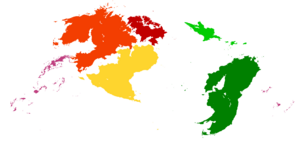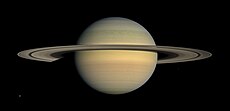Teleon: Difference between revisions
mNo edit summary |
|||
| (3 intermediate revisions by the same user not shown) | |||
| Line 73: | Line 73: | ||
| {{flag|Razan}} | | {{flag|Razan}} | ||
| {{flag|Yingok}} | | {{flag|Yingok}} | ||
| | | 812,642,093 | ||
| {{ | | {{flagicon|Yingok}} [[Hoyzhau]] | ||
|-bgcolor="#FFFFFF" | |-bgcolor="#FFFFFF" | ||
|bgcolor="#c10000"| | |bgcolor="#c10000"| | ||
| Line 80: | Line 80: | ||
| {{flag|Waldrich}} | | {{flag|Waldrich}} | ||
| {{flag|Falland}} | | {{flag|Falland}} | ||
| | | 149,332,077 | ||
| {{flagicon| | | {{flagicon|Waldrich}} [[Alsvik]] | ||
|-bgcolor="#FFFFFF" | |-bgcolor="#FFFFFF" | ||
|bgcolor="#008000"| | |bgcolor="#008000"| | ||
|[[Elia Australis]] | |[[Elia Australis]] | ||
| {{ | | {{flagicon image|Flag_of_Nadauro_without_the_coat_of_arms.png}} [[Nadauro]] | ||
| {{ | | {{flagicon image|Flag_of_Nadauro_without_the_coat_of_arms.png}} [[Nadauro]] | ||
| | | 139,411,400 | ||
| {{flagicon|Nadauro}} [[Itabira]] | | {{flagicon|Nadauro}} [[Itabira]] | ||
|-bgcolor="#FFFFFF" | |-bgcolor="#FFFFFF" | ||
| Line 94: | Line 94: | ||
| {{flag|Free States}} | | {{flag|Free States}} | ||
| {{flag|Free States}} | | {{flag|Free States}} | ||
| | | 44,823,900 | ||
| {{flagicon|Free States}} [[Fastings]] | | {{flagicon|Free States}} [[Fastings]] | ||
|-bgcolor="#FFFFFF" | |-bgcolor="#FFFFFF" | ||
| Line 102: | Line 102: | ||
| Zhudan | | Zhudan | ||
| X | | X | ||
| X|-bgcolor="#FFFFFF" | | X | ||
|-bgcolor="#FFFFFF" | |||
|bgcolor="#c04080"| | |bgcolor="#c04080"| | ||
| [[Galania]] | | [[Galania]] | ||
| Line 202: | Line 203: | ||
| style="text-align:right;"| 1,298,032 km<sup>2</sup><br>(501,173 sq mi) | | style="text-align:right;"| 1,298,032 km<sup>2</sup><br>(501,173 sq mi) | ||
| style="text-align:right;"| 107.4/km<sup>2</sup><br>(278.2/sq mi) | | style="text-align:right;"| 107.4/km<sup>2</sup><br>(278.2/sq mi) | ||
| [[Elia | | [[Elia Australis]] | ||
| colspan=2 align="center" | [[President of Nadauro|President]] [[Nataniel Magalhães]] | | colspan=2 align="center" | [[President of Nadauro|President]] [[Nataniel Magalhães]] | ||
| style="text-align:right;"| $1,391.6 billion | | style="text-align:right;"| $1,391.6 billion | ||
Latest revision as of 10:22, 23 June 2024
This article is incomplete because it is pending further input from participants, or it is a work-in-progress by one author. Please comment on this article's talk page to share your input, comments and questions. Note: To contribute to this article, you may need to seek help from the author(s) of this page. |
 The six continents of Teleon. | |
| Designations | |
|---|---|
| Earth, the World | |
| Orbital characteristics | |
| Eccentricity | 0.026 |
| 365.593 d | |
Average orbital speed | 27.3 km/s |
| Satellite of | Luna |
| Physical characteristics | |
Mean radius | 4,891.1 km |
| 296,012,380 km2 | |
| Mass | 5.972×1024 kg |
Mean density | 7.280 g/cm3 |
| 9.694 m/s2 | |
| 10.706 km/s | |
| 0.9972 d (23h 49m 6.3s) | |
| 24.04° | |
| Atmosphere | |
Surface pressure | 100.2834 kPa |
Teleon, commonly referred to as Earth or the World, is a terrestrial planet orbiting the Sun. It is the fifth-largest and fifth-most-massive object in the Solar System, as well as the only currently known celestial object in the Solar System and the known universe to harbor and sustain life. Additionally, it is the largest and densest of the Solar System's rocky planets. Teleon constitutes a binary planetary system together with its only natural satellite, the Moon or Luna, that makes up 40% of the binary system's total mass and interacts with the respective other gravitationally.
Teleon is unique in that its surface consists partly of liquid water, both as salt-water and freshwater, making up the hydrosphere, and an active planetary geology with mechanically rigid tectonic plates constituting the lithosphere above a planetary interior of a solid inner core, fluid outer core and convecting mantle layer, active geothermal activity which produce volcanic activity, earthquakes and a stable geomagnetic field. This allows the planet to have developed a rich atmosphere consisting mainly of nitrogen, oxygen and other gasses, which in turn results in the constitution of the water cycle, greenhouse effect and weather existing as a dynamic system on Teleon.
Various factors such as the aforementioned and particularly Teleon's distance from the Sun allowed for the planet to proliferate anaerobic and later aerobic life some 4.1 billion years ago. Since, life has evolved and thrived over long periods of Teleon's history, spawning a plethora of biodiversity and occassionally punctuated by mass extinction events. Today, the modern human (homo sapiens) inhabits Teleon and has increasingly altered its climate and atmosphere, biosphere and surface in what is dubbed the "anthropocene". Having ascended as a global species, it has established various societies of ethnicities, religions, sovereign states and ideologies, and made significant progress in culture, arts, sciences, economic prosperity, and quality of life.
Etymology
Geophysical characteristics
Oceans and continents
Most of Teleon's surface is subdivided into oceans, which constitute the majority of its hydrosphere, and continents, which are the planet's largest landmasses. By convention, the four oceans consist of the Alconian, Galanic, Glacian, and Medan, generally seen as parts of a continuous world ocean, while the five regions considered as continents consist of Abaria, Calesia, Elia Australis, Elia Borealis, Galania, and Hylasia. The boundaries of the continents are also influenced, albeit often times arbitrarily, by the groupings of sovereign states into regions defined by joint historic and or cultural heritage. By geologic perception, Teleon's continents roughly correspond to the surface presence of continental crust, though continental crustal fragments such as various islands and continental crust submerged by the ocean are not commonly referred to as distinct continents.
Due to Aurorum's vivid tectonic and other geological activity, its surface and relief is made up of ocean trenches and graben, plateaus, mountain ranges and other forms of topography. The deepest underwater location of Teleon's seabed is the Tartarus Deep of the X Trench in the western Alconian Ocean, with a depth of 11,038 m (36,214 ft). Teleon's highest mountain above sea level is the Tongfong, located in the Hakul Mountains and its elevation established to be 8,684 m (28,491 ft).
| Name | Largest country | Most populous country | Total population | Largest city | |
|---|---|---|---|---|---|
| Abaria | 812,642,093 | ||||
| Calesia | 149,332,077 | ||||
| Elia Australis | 139,411,400 | ||||
| Elia Borealis | 44,823,900 | ||||
| Hylasia | Zhudan | Zhudan | X | X | |
| Galania | Muhantara | Muhantara | X | X |
Orbit and rotation
Atmosphere
Hydrology
Satellites
Solar System
Inner Solar System
The inner Solar System comprise the four terrestrial planets, made up of refractory materials such as silicates and metals which from the planets' respective crusts and mantles, as well as one gas giant consisting mainly of gasses such as hydrogen and helium. The boundary of this region is scientifically arbitrary as there is no system feature that denotes an exact border, though all planets of the inner SOlar System have substantial atmospheres, no ring systems, few to no moons and are all located within the system's frost line.
Laophanes

Laophanes is the closest planet to the Sun and the third-largest planet of the system (approximately 17 M🜨) due to it being a gas giant. The planet has no natural satellites, but a noticably short orbital period of 24 days which warranted the current classification of Laophanes as a hot Iphias, as well as a retrograde orbit. Due to its proximity to the Sun, it remains tidally locked with the planetary day side experiencing high stellar irradiation and a temperature difference of some 500 K in comparison to its night side. This environment allows for intense wind currents, radical atmospheric stratification and super-rotating equatorial jet streams and storm vortices. Laophanes' origin and history have not yet been explained, though the planetary migration hypothesis is generally ruled to be the most likely one. It is probable Laophanes will eventually be stripped bare of its atmosphere due to hydrodynamic escape and become a chthonian planet some 2.3 billion years in the future.
Maciune
Maciune is the smallest planet in the Solar System, with less than 0.096 M🜨, and the second-closest planet to the Sun. It is characterized by its unusually large axial tilt at almost 79.2 degrees, the highest orbital eccentricity of any planet in the system, and the striking outside resemblence to Luna; Maciune features a heavily cratered and rugged surface, indicating long-subsided geological activity. However, long and prominent streaks of material traversing the planet's surface, called lineae (meaning "lines"), potentially indicate tectonic activity analogous to mid-ocean ridges on Teleon and, ultimately, tidal flexing in the planet's distant past. Therefore, Maciune is generally agreed to have been a former and escaped moon of Laophanes, knocked out of its orbit at some point during Laophanes' migration phase. Because it is tectonically dormant and relatively small, it retains only a very faint surface-bound exosphere incapable of a greenhouse effect and therefore sees temperature fluctations in the range of 600 K (327 °C; 620 °F).
Teleon
Teleon, or Earth, is the third-closest planet to the Sun and the second-largest and single largest terrestrial planet in the entire and inner system respectively. It is special in that it is the only known celestial body to exhibit developed life, a liquid hydrosphere and active plate tectonic activity. Composed of a solid inner core, a liquid outer core and mantle, and a solid crust through planetary differentiation, Teleon also simultaneously is the most dense terrestrial planet and possesses the largest terrestrial geomagnetic field. The presence of life radically altered the planet's atmospheric makeup through the emission of most notably oxygen, carbon dioxide and methane, surface through vegetation and human activities, and the consumption of its natural resources. Teleon is part of a binary planet system together with its only natural satellite, Luna or the Moon, which also is the only large satellite of a terrestrial planet in the Solar System.
Luna
Luna, or the Moon, is the only natural satellite of Teleon. With approximately two-thirds the diameter and one quarter the mass of Teleon (0.27 M🜨), Luna, as a planetary-mass object, is considered to be the binary planetary partner to Teleon, and its gravitational influence so large that the barycenter of the Teleon system lies outside Teleon, causes Teleon's tides and is responsible for its tidal acceleration, as is vice versa the case for Luna due to Teleon's gravity. It lacks any noteworthy magnetic field, atmosphere or hydrosphere, and features dark maria ("seas") of volcanic origin, impact craters, lobed rupes ("cliffs") and highly variable topography. Its origin and interior are not fully understood, as its core is disproportionally large and its formation can only partly be explained by the proposed giant-impact hypothesis, gravitational capture of Luna, or joint formation of Teleon and Luna in a circumplanetary disk.
X
X TBD
Outer Solar System
Iphias
Iphias TBD
Asteroid belt
The asteroid belt TBD
Atiner
Atiner TBD
X
X TBD
Human geography
| Flag | Sovereign state | Capital city | Population (2021) |
Area | Population density |
Continent | Head of state | Head of government | nominal GDP | Form of government |
|---|---|---|---|---|---|---|---|---|---|---|

|
Dahemia | Gonece | 2,183,805 | 2,599.3 km2 (1,003.6 sq mi) |
840/km2 (2,175.9/sq mi) |
Calesia | Minister-President Ulrich Barschel | $148.3 billion | Constitutional republic | |
| Falland | Sydenham | 84,372,472 | 415,116 km2 (160,277 sq mi) |
211.14/km2 (546.9/sq mi) |
Calesia | Monarch Theresa | Prime Minister Karren Shroff | $3,504.0 billion | Constitutional monarchy | |

|
Free States | Saint Leon | 44,823,900 | TBD km2 (TBD sq mi) |
TBD/km2 (TBD/sq mi) |
Elia Borealis | Supreme Executive Council of the Union of Elian Free States | $310.0 billion | Directorial republic | |
| Nadauro | Itabira | 139,411,400 | 1,298,032 km2 (501,173 sq mi) |
107.4/km2 (278.2/sq mi) |
Elia Australis | President Nataniel Magalhães | $1,391.6 billion | Presidential republic | ||

|
Razan | Sekizbulut | 160,221,093 | TBD km2 (TBD sq mi) |
TBD/km2 (TBD/sq mi) |
Abaria | TBD | TBD | $1,920.0 billion | Parliamentary republic |

|
Waldrich | Alsvik | 62,775,800 | 631,214 km2 (234,713 sq mi) |
99.5/km2 (257.6/sq mi) |
Calesia | Foresitter Mats II | Lawspeaker Anders Kjeldsen | $2,837.0 billion | Constitutional monarchy |
| Yingok | Dongsing | 652,421,000 | 8,037,614 km2 (3,103,340 sq mi) |
81.17/km2 (210.2/sq mi) |
Abaria | President Yeung Kapkaa | $9,122.0 billion | Constitutional republic | ||



